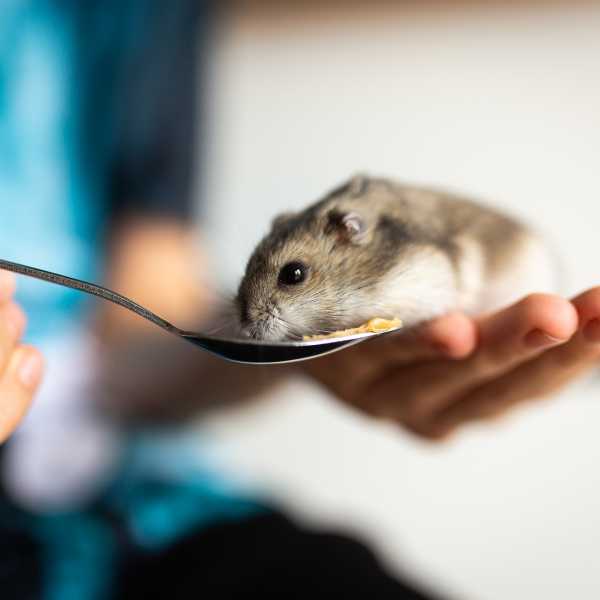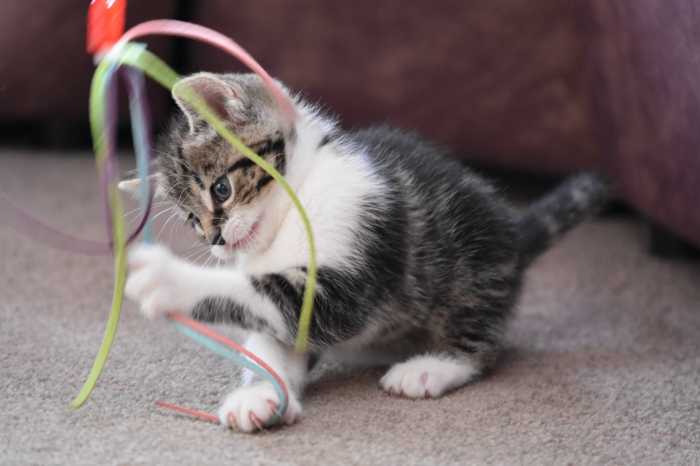
Pets Radar - How to play with a cat: A vet’s advice on keeping your cat entertained, active and well-behaved
Posted on 13 August, 2021

Image by Helga Kattinger from Pixabay
Written by Elizabeth Racine, DVM for Pets Radar
Knowing how to play with a cat isn’t just fun and games; it’s also essential for your cat’s health and well-being. Playing allows your cat to express his natural behaviors, burn calories, and even learn a few new tricks along the way. Unfortunately, many of us have never taken the time to learn what makes our cats really want to play. A basket of even the best cat toys sitting untouched in a corner is unlikely to pique your cat’s interest and can leave you both feeling frustrated. Every cat has different needs and preferences, so it’s important to find the style of play that your cat prefers. To help uncover your cat’s favorite type of play, try some of these tips!
1. Stimulate your cat’s natural instincts to encourage play
A cat’s play behaviors are rooted in his natural instincts, particularly hunting behaviors. Cats love to stalk, chase, pounce, and attack. Cats are particularly attracted to movement, so leaving toys sitting on the floor may not be very enticing to them. To address this problem, set aside some time every day to actively play with your cat. This can include dangling toys for your cat to jump at, tossing toys for your cat to chase, or even hiding toys around the house and encouraging your cat to find them. Be sure to offer toys of different shapes and sizes, such as small toys that your cat can pick up and toss around and larger toys that your cat can grab and kick.
You can also tap into your cat’s natural hunting instincts by experimenting with toys that mimic prey. Try offering your cat toy mice, the best laser toys, or toys that chirp to see if any of these options stimulate him to play. Many cats also enjoy investigating different scents. Most cat owners are familiar with catnip, which is a favorite for many cats, but you can also try offering your cat a little silver vine, mint, honeysuckle, or even herbs like basil and rosemary to stimulate his senses. Take a look at our guide to the best catnip toys for some advice on what’s available.
2. Offer lots of environmental enrichment for your cat
Does your cat lie around the house, napping the day away? Unfortunately, this very common cat behavior can be a sign that your cat is bored. As many of us have learned, there’s not much to do when you’re stuck in the house all day. Being bored can also lead to problems for your cat, including destructive behaviors, anxiety, and obesity. To keep feline boredom at bay, The Ohio State University Indoor Pet Initiative recommends starting with your cat’s basic needs, including a variety of toys, the best scratching post, resting areas, hiding places, and perches or even a cat hammock for vertical space. Just like kids can get bored with their toys, cats also appreciate variety and novelty, so keep extra toys on hand and rotate them frequently to keep your cat interested.
3. Don’t play using your hands or body
While it may be tempting to tickle your cat’s belly or tantalize a kitten with your fingers, it is best to avoid using your hands or body to play with a cat. It may be cute to let that little kitten nibble on your fingers now, but it won’t be nearly as fun when your cat is fully grown and those bites become painful! Once your cat learns to view your body as a toy, it can be a tough habit to break and can lead to cat behaviour problems. To help discourage your cat from biting or chasing after you, avoid using your body as a toy and stick to playing with appropriate objects instead.
Has your cat already learned to bite your hands or chase after your feet? If so, you’ll need to take some steps to break this habit. Cats are often attracted to movement, so stop moving if your cat is attacking you or if you notice him getting ready to pounce. Try redirecting him onto a more appropriate toy, like a catnip mouse or a dangly string. For cats that like to chase after moving feet and pant legs, tossing a toy or treat down the hallway ahead of you can help distract your cat and reduce the behavior. Make sure your cat is also getting plenty of environmental enrichment and active cat play time with you throughout the day so that he has plenty of opportunity to vent that playful energy in a safe and appropriate way.
4. Use food for encouragement and rewards
If your cat is food motivated, you can provide some extra incentive to play using food as a reward. This is also a great way to encourage an overweight cat to move more and work for his supper! Try hiding bits of dry cat food around the house for your cat to find or using a puzzle toy so that your cat has to work for each piece of his meal. To create an easy do-it-yourself puzzle toy, pour a small amount of kibble into each well of an empty egg carton. This will force your cat to use his tongue and paws to pull out pieces one at a time, keeping him busy for longer and encouraging more activity during his day. Food is also a great way to reward your cat for playing appropriately with a new toy, especially if you are trying to discourage inappropriate play like attacking hands and feet. You can even use food as an incentive to teach your cat a few tricks! To ensure your cat doesn’t gain weight from these rewards, use pieces of his regularly portioned meals and limit treats to no more than 10% of his daily calorie intake.
Elizabeth Racine, DVM
Since obtaining her doctorate in veterinary medicine, Dr. Racine has worked exclusively in small animal general practice. Her work has been featured in blog posts, articles, newsletters, journals, and even video scripts.
To read the original article by Dr Elizabeth Racine for Pets Radar, please visit: www.petsradar.com/advice/how-to-play-with-a-cat
Tags:



